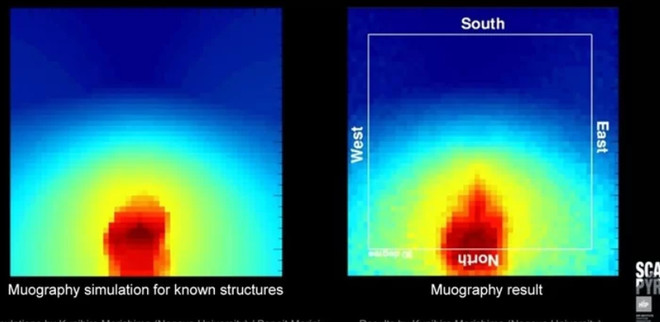Dead Sea scrolls and important archaeological findings in 2017
New archaeological findings can change history. This article lists important archaeological findings in 2017 summarized by the Live Science website.
1. Iraq's inheritance from ash

Pit excavated artifacts.
When the Kurds recaptured Khorsabad - the old Assyrian capital, they found a lot of carvings and statues. The artifacts were taken to the archaeological center for restoration and preservation.
Archaeologists and historians will also study and partially reconstruct artifacts in Nimrud. Archaeological groups will likely return to many areas of Iraq to preserve and excavate the sites.
Although the looted IS artifacts have been dispersed throughout the world, they will gradually return to museums in Iraq and Syria - where they are properly preserved, researched and exhibited.
2.

Pyramid image data scan.
Researchers from the Pyramid Scan project reported that they found two holes inside the 4,500-year-old Giza Great Pyramid built for Pharaoh Khufu, which is considered a "wonder of the world".
However, the team of project supervisors warned that holes in the group's data could also be due to the inside of the pyramid built of stone of different sizes.
The "Pyramid Scan" project lasted a year, enough time to gather more data to answer the question of whether these gaps were real, how big they were and what they contained.
3.

A piece of Dead Sea Paper.
The Israeli Archeology Agency said that many ancient scrolls existed in the Judean desert and the bandits saw some. The first Dead Sea scroll was discovered in 1946 or 1947 in a cave near the Qumran area.
Last October, 25 pieces of Dead Sea Scrolls were purchased in the antiquities market. Scholars suspect it could be fake, but others argue that looters discovered them in the cave.
Since 2002, about 70 pieces of Dead Sea Scrolls have been traded in the antiquities market and are increasing. Also in October, the anti-looting unit confiscated a passage of 2,600-year-old library books being sold (although it was argued to be real or fake).
4.

Hole excavated at Abydos.
In last October, a research group of Penn Museum - University of Pennsylvania, announced the discovery of a 3,800-year-old picture showing more than 120 ancient boats in Abydos, Egypt. The scene is found near the Pharaoh Senwosret III tomb.
Just a few weeks later, an Egyptian research group announced the discovery of a 5,000-year-old city in Abydos. The city has a cemetery containing 15 graves.
5. Detecting the Western element in

The statue has a Greek element.
Archaeologists were startled to gather all kinds of data and artifacts, such as ducks, swans, and cranes that might have been affected by Greece in the tomb of Qin Shihuang. Moreover, some remains in northern China carry European DNA.
Did Europeans come to China from the Qin Shihuang era?
- The last Dead Sea scrolls in the Skullhead
- Successfully decode the 1,500-year-old bible scroll
- 10 most archeological findings (2)
- Scary archaeological findings
- Unexpected facts about the Dead Sea
- Decode ancient scrolls in Vesuvius volcano with new technology
- 400 new information about discovery, archaeological research
- The remains of the water tank reveal the collective beheading of the ancient book
- New archaeological findings in North Africa may
- 5 archaeological mysteries are never deciphered
- Mexico discovered many important archaeological sites
- Archaeological holy sites awaiting the opening in 2018
 Discovered an ancient centipede fossil 99 million years old
Discovered an ancient centipede fossil 99 million years old Discovered bat-like dinosaurs in China
Discovered bat-like dinosaurs in China Discovered a 200-year-old bronze cannon of the coast
Discovered a 200-year-old bronze cannon of the coast Discover 305 million-year-old spider fossils
Discover 305 million-year-old spider fossils